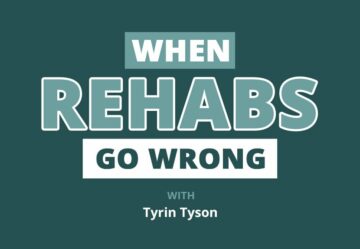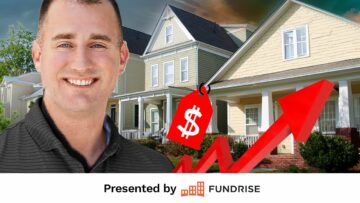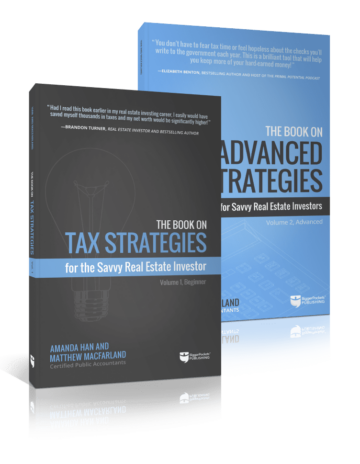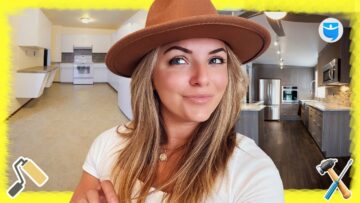
We’re in the thick of a housing crisis. Buyers are waiting to pounce on properties, but there aren’t any houses to buy. Mortgage rates are high, and prices have risen or stayed flat in most parts of the country. So, where do first-time home buyers turn when there’s nowhere else to go? New construction homes! But it’s not just regular home buyers bidding on new construction. Investors are creating more competition as the existing home market slowly trickles out inventory.
Nikolas Scoolis’ team at Zonda has been distributing some of the most comprehensive new construction data for the 2023 housing market, and he’s got some good news to share. With new construction home sales sharply rising over the past year, builders are getting bullish, and home buyers are FINALLY getting their hands on some inventory. But, with so many home builders chasing luxury profits, are affordable houses even worth building? And while new homes bring some relief to the inventory crisis we’re facing, it may not be enough to balance supply and demand.
Nikolas will get into new construction market updates, why new home sales are exploding, who’s buying, and the BIG incentives builders are promising buyers.
Click here to listen on Apple Podcasts.
Listen to the Podcast Here
Read the Transcript Here
Dave:
Hello everyone and welcome to On The Market. Today I am joined by Kathy Fettke. Kathy, how’s it going?
Kathy:
Good. I’m excited for this interview because I’m a huge fan of Zonda. I watch all their stuff.
Dave:
Yeah. Well, since you’re such a huge fan, why don’t you tell everyone what Zonda is?
Kathy:
Well, I did actually talk to our guest today before the recording, and it used to be Meyer’s Research, and I interviewed those guys a bunch and would follow their information and they really just focus on new homes. They help new home builders figure out where to build their homes and where the market is and the demographics. And all that stuff is really important for investors too, so I figure if you’re a new home builder, you have to know what’s coming because it takes years and years to get those subdivisions up and running and make sure that you’re not timing the market incorrectly.
So I’ve always very much valued the John Burns of the world and the Myers Research because that’s what they do and they help builders. So Myers Research worked with a data company called Zonda, and apparently they merged and now it’s just Zonda. And I’ve been a big fan since they merged and excited to actually talk to someone from within and see how they do what they do.
Dave:
Yeah, absolutely. I think it’s super helpful to talk to these types of people because like you said, builders are sort of on the forefront of the economy and what’s going on with demand and supply dynamics in almost every market. The other part of it, and the reason we’re bringing these people on too with more frequency, is that as investors, the new home market is becoming more and more important. And I don’t know, you operate in a different world than I do in real estate, but for the first 10 years of my investing career, I never really even paid attention to what was going on with new homes because it was just a small part. As an investor, I never really thought about buying new construction.
Now as of the last couple of years, new homes are taking up more and more of the total number of home sales. Normally it’s like 10%, I’ve heard different estimates that’s between 15 and 30% now. Build to rent is a new thing that’s becoming increasingly popular. So I’ve personally tried to learn a lot more about the new home sale market and we’re bringing on guests like Nikolas today to help everyone understand it because in addition to the economic understanding and knowledge, this also might play a bigger and bigger role in our respective portfolios for the next couple of years.
Kathy:
Yeah, I have the opposite experience where when I started investing, I was already busy, but I wanted to buy in certain markets, not where I live, and I didn’t know how to assemble a team and be able to buy homes at a discount and then have a renovation team, and it just was too much for me. So I thought, “Oh gosh, a new home, I don’t have to do anything.” And at the time, it was 2004 when it just made sense. So I actually started with new homes. Of course, when it all depends on the market, when the market collapsed and foreclosures were what was for sale, we pivoted, but we’re pivoting again because it is so hard today to find foreclosures, to find existing inventory. So new homes is what you get, and fortunately you can negotiate with builders because they’re business people, right, they need to make sales. So I think it’s important for investors to not take that off the table and not think, “Gosh, if it’s easy, I shouldn’t do it.” That doesn’t make me a good investor.
The other thing we talked about on another episode is that you can get better insurance rates on a new home, and that matters a lot when you’re doing your proforma. That matters so much today. So it can make a lot of sense today.
Dave:
Yeah, and you just hit on something, then we’ll promise we’ll bring Nikolas in. But you said something about them being business people, and I think that’s something that not everyone immediately understands is that builders have to sell their homes. I mean they don’t absolutely have to, but they are strongly incentivized to sell whatever they build. And unlike a home seller who maybe if they don’t get their price, they’re just like, “You know what? We’re going to wait a year, or we’re just going to pull it off the market. We’re going to wait for more bids.” Builders, that’s not how their game works. They need to be constantly selling money to get cashflow in to pay off their debt, to build new properties, to acquire new land and their business in some ways, sort of like a flipper, is to sell these properties as quickly as possible.
And so we will definitely bring this up with Nikolas, but there’s been a lot of incentives to help buyers purchase new homes, which is giving it a further advantage over existing home sales. So a lot to uncover here and I think we got the right person to help us understand it. It’s Nikolas Scoolis from Zonda, and we’re going to bring him in right after this break.
Nikolas Scoolis, welcome to On the Market. Thanks for being here.
Nikolas:
Thanks so much for having me. Excited to be here.
Dave:
Well, let’s start by having you tell us a little bit about yourself and what you do at Zonda.
Nikolas:
Yeah, so my name’s Nikolas Scoolis. I’m the Manager of Housing Economics at Zonda, which is residential and some commercial real estate data provider as well as consultancy. We work with a lot of the big public builders as well as the investors behind those companies who are looking into invest in secondary and tertiary companies in housing, so like appliance providers, paint providers, etc. like that. My job is a lot of data analysis model building. I build our public facing indices as well as helping with consultancy projects.
Dave:
Awesome. Well, it sounds like you are the guy to talk to. Thank you again for joining us. So your team just released the new Home Monthly Update. Can you just tell us a little bit about this report, first of all, what you’re tracking in it and what the most recent findings show?
Nikolas:
Yeah, for sure. So we released this, as it says, on the new home market, trying to cover all the primary points. So we talk about sales, pricing, supply, and we do so on a monthly basis because we at Zonda have in-house research team and we survey about somewhere between 60 to 70% of the entire new home market each month, and so we’re able to kind of get really valuable insights that way. For example, the census, which publishes a version of new home sales, only surveys about 10% of the market. So our data collection is really comprehensive.
So this month what we’re seeing is a little bit of maybe surprising if you’re thinking about the housing market as a whole, but the new home market has been really, really strong over the last few months, and it’s been really benefiting from the lack of supply on the resale side. Builders also have been able to take advantage of being more flexible, meaning they could bring products to market that buyers may be willing to compromise on because there’s nothing available on the resale side, and they’re also able to maybe build smaller and right size and bring that price down. So we’re seeing really strong new home sales across the country right now. We’re estimating about an annualized pace of about 720-ish, which is a relatively strong historical number, and it’s up about 30 to 40% from where it was in the slowdown last year because last year rates were beginning to rise and buyers were beginning to pull back and there was maybe a little bit of panic, but recently we’ve seen it kind of come full circle and seeing a lot of strength there.
At the same time, we are seeing prices continue to come down and a lot of that has to do with the historical affordability crunch we’re seeing in the market. Obviously, rates just surpassed 7% last week on a national average for a 30-year fixed. That is high when you’re considering where prices are. But we have data that splits the market into price thirds, so we’re talking about entry level, move up, the high end market. And the bottom two price points, which are where most of the people are shopping across the country, are basically just flat year over year.
Kathy:
Are you seeing that on a national basis with prices coming down or just in specific markets?
Nikolas:
No. Yeah, national basis. Some places across the country are actually seeing fully negative year-over-year changes, but obviously prices have appreciated so much over the past two or three years. Calling it negative is almost disingenuous, but we’re seeing prices flatten out. And part of that is of course because of rates, but as I mentioned earlier, builders are building smaller and so they’re trying to keep this top line number down, but we’re still seeing price per square foot go up. So you’re kind of having a trade-off there, but the top line number is what’s important to buyers when they’re trying to pencil out what they can afford on a monthly basis.
Kathy:
Yeah, I was just going to ask that. It seems like over the past decade there’s been under-building compared to household formation, but for builders obviously they want to make a profit and they weren’t really making that profit with affordable housing, so they were building higher end. Would you say that that’s true and is that changing?
Nikolas:
I think it’s broad-based. Obviously you have builders who are targeting different price points. We are seeing the most appreciation on the high end still, but I think maybe there’s less price sensitivity there, maybe less rate sensitivity, because a higher end buyer might be more inclined to pay cash or a larger down payment with a higher portion of the total sale price in cash. But we are seeing a lot of more affordable units come on, and I think that’s just the nature of the beast of the market at the moment.
Kathy:
Yeah, we just saw that Warren Buffet is investing in KB Homes and they typically build starter homes or more affordable homes, so definitely a push there to bring on more affordable housing.
Nikolas:
Definitely. Yep.
Dave:
Do you expect that trend to continue, Nikolas, that more builders are going to be able to build affordable homes profitably and will focus their efforts more in that area?
Nikolas:
Yeah, I think the opportunity is there for them because I think traditionally if you were a buyer, you would be more inclined to historically if you’re looking for a cheaper house, look on the resale side. But over the last few years, because there’s so many people who got new mortgages or refied and locked in a rate at two, two and a half, 3%, there’s very little incentive for anybody to put their home on the market at the moment. And so that entry level price point or maybe a fixer upper or something like that that a first time buyer would be looking to pursue just doesn’t have that option really at the moment. There’s just nothing for sale on the existing side.
So builders have a really, really unique opportunity to dictate their own market, and so even if you look at maybe the square footages being built now, which are even under sub two on average in some markets, like 1500 square feet as an average unit size and some of these projects, that gives opportunity to these buyers to afford something. But it gives builders more margin to kind of push a higher price per square foot and still make good profits.
Dave:
Yeah, that makes sense. Kathy and I were actually talking earlier and we were chatting about how difficult it can be for builders to build affordably and make that still profitable. I’m curious, because your survey has such a wide breadth of respondents, do you see that small builders are also able to build these affordable homes? Or is it really the large publicly traded ones that can achieve a level of scale that a lot of other types of builders cannot?
Nikolas:
Yeah, we’re definitely seeing more success for the big publics, and a lot of that is due to how they can scale. As you said, they can buy more land in bulk, they can afford to hold onto land if they have to, but the privates still do have some flexibility because you can be building in the infill units where there isn’t just much land available at all. So you can be doing these smaller scale developments but in more desirable areas and attracting very good dollar for that because of that.
Kathy:
In the report, it was really shocking that some markets were seeing a pretty strong recovery and one of those was Sacramento and San Francisco. Explain that one.
Nikolas:
Well, I mean there is some strength there right now. Just again, we’re going to deal with the lack of supply and builders being the primary option. Because if you’re just looking broader nationally, we’re only seeing about national pace of existing home sales, about 1.4 per month, even if you’re factoring in the stronger new home numbers relative to that. Still, total housing sales across the country are down about 15 to 20%, so it’s kind of hard to reconcile the two between the strength in the new home market and the weakness in the existing. But with these west coast markets primarily, they were hit so hard negatively last year that a lot of this has to do with the base effect. They were just so down a year ago that doing moderately well now looks extremely good. That’s what we’re seeing a lot. The top five markets for us among major metros were all west coast and that’s because of that base effect.
Kathy:
San Francisco in particular, there’s not a lot of room to build, you’ll be building on the water. I do have a niece who’s a real estate agent there, and she said she has people on a wait list, but there’s just nothing available. And when something comes up, it sells immediately, so fascinating.
Nikolas:
Really tricky stuff for a buyer.
Dave:
I am curious, have you seen Nikolas, the demographics of the buyers change? I know you mostly survey the builders, but are the type of people who are attracted to new construction relative to existing homes changing given these inventory dynamics?
Nikolas:
Yes and no. Obviously, the primary buyers historically are the people looking to start a family who need more space, want to commit to a payment on their own schedule rather than being subject to whatever their landlord changes their rent to. But as we know with the pandemic and stuff, we saw a lot of retirees looking to push into smaller units as well to be closer to their family. We call it baby chasing, moving where their kids are having kids, and we’re still seeing that widespread in some of these hotspot markets.
And from a very slight personal anecdotal experience, I was pursuing with my girlfriend out here in Southern California, a very small two, three bedroom, single level home, and every other bidder on that house was a recent retiree looking to downsize from their old home into this smaller home.
Dave:
Interesting.
Nikolas:
So I think it’s kind of like a weird situation because I don’t think a lot of these people who are looking to move into these smaller homes as a baby boomer or Gen X are going to then further sell their home. I think because their rates can be so low in their current holdings, they’re just holding onto it as a rental unit, and then that’s another unit that comes off the market and further hinders the supply problem.
Dave:
Yeah. Also if they do, they probably have a lot of equity from a previous home that they can outbid first time home buyers?
Nikolas:
We saw that a lot over the last two to three years. People, especially from California where homes are obviously a lot more expensive than Texas or places in Florida or Raleigh and Charlotte have been really big hotspots, you can just basically roll that equity into a rate free purchase if you choose to.
Kathy:
Yeah, BiggerPockets just did an article on baby boomers and I believe I saw that baby boomers hold 50% of the wealth and they’re just a quarter percent of the population or something like that, and they have a lot of cash. I would hope so after 30, 40 years of working that you’ve got some cash built up. So this market doesn’t maybe scare them as much. They’re looking more for lifestyle. Sorry, they’re beating you out on [inaudible].
Nikolas:
I know. It hurts me, but I mean good for them I guess.
Kathy:
So where are you seeing the best incentives and what kinds? I mean I know that a lot of builders are paying to buy rates down, paying points so that buyers can afford the property with a lower rate. Are you seeing that type of incentive or like you said at building a smaller house that might be more affordable?
Nikolas:
Yeah, that’s a really good question because rate buy downs have been super, super important. And that’s another thing the new home side has over the existing side is that builders are willing to work with buyers to get the cashflow going. And so interest rate buy downs, they’re not like a new idea, but those share of projects that we’re doing that over two years ago compared to now has just risen dramatically. We’re currently seeing across the country about 60% of all the projects offer some kind of incentive, and the most commonly that we’re hearing are interest rate buy downs.
And that’s an interesting topic as well because obviously that helps with the immediate affordability relief, but as interest rates keep going higher, it’s kind of a question of how long will that strategy continue to attract buyers? Because if there’s not any signs that rates are coming down in the year or two years, will that still continue to move the needle for people? We’ll have to see. But before that, we would see incentives like closing cost coverages done by the builders or appliances included or something like that.
Dave:
And do you expect those incentives to continue even though … It’s sort of this weird dichotomy where builders seem to be in this position of strength, but they’re also offering a lot of incentives. So do you think those incentives might be going away?
Nikolas:
I think, yeah, if builders have their way, they’ll be dwindling down sooner rather than later. But even though builders’ biggest competition is the resale market, they are still competing with each other. So it is still a marketing expense to say, “Why would you go for that home and that builder’s project when you can come to ours?” We’ll do this little bit to move you over the line.”
Kathy:
Yeah, builders don’t want to cannibalize themselves. They’d rather do an incentive than a price reduction every day because then they’ve just made a new comp that’s not good for them.
Nikolas:
100%.
Kathy:
But it seems like it used to be, “Hey, you’re going to get these gorgeous new countertops or this upgrade. That’ll get you to pay this price,” but now it’s a better deal to get a lower interest rate. Like I’ve said way too many times, I just got a four and three-quarter percent interest rate because the buyer was willing to pay a bunch of points and it really makes the numbers work from an investor perspective. Do you have any data on how many of these new homes are being sold to investors looking to rent them versus first-time home buyers or buyers?
Nikolas:
Not exactly. It’s something we’re pursuing to look into on a larger scale. We’re trying to isolate in the deeds which are investors, but there’s just a lot of gray area in facts because people do … The best way to isolate it out in the deed itself is kind of looking at mailing addresses, but there’s still a bunch of gray area. But obviously we do know investor activity is extremely high, especially from an institutional standpoint, and that is somewhat concerning if you’re a buyer. You’re competing with not only people with big pockets, you’re competing with companies with gigantic amount of cash on hand. It’s a little scary.
Dave:
And is that just true across the board that institutional investors are participating more in the new home market?
Nikolas:
It definitely varies market to market. It has to obviously make sense as a rental for a lot of these places depending on what price they’re paying. So you’re looking at a lot of activity in the more affordable places where there’s room for rental rates to increase at a higher rate. And then obviously on the further end of that, you have full projects that are build to rent. They’re building these projects themselves to just rent them themselves and operate as a landlord, which is obviously a very complicated process because the land price has to be exactly right for it to work, but it does give these builders ad out also. If they need to liquidate, they also have the price appreciation they’ve gained in value of their rental units. So it’s kind of a very interesting prospect, but as I said, it has to work exactly right in terms of land value for it to really make sense.
Dave:
Well, just to clarify, when we talk about your survey and the data, does that include build to rent as well?
Nikolas:
No, this is new for sale.
Dave:
Okay. Okay. So that’s just a different class of sale?
Nikolas:
Yeah, completely different. We do work on a lot of build to rent projects, but these are for sale units.
Kathy:
So we’re seeing builder confidence has been up, but I think it just declined a little bit recently because of the recent mortgage rate increases. Do you see that trend continuing of builder confidence versus a decline in the future?
Nikolas:
Yeah, I think you’re right. I think it recently declined to about 50, which if I’m recalling reading it right, I think it was declined to 50 and 50 is the marker of how they indicate positive confidence or negative confidence. So it’s right on the border right now and I think it’s a cautious confidence. There’s so many dynamics that are good for them, but that price and affordability crunch is still just weighing down on their heads. And especially if rates keep going up, at some point there’s just diminishing returns in what buyers can afford.
So I think it’s kind of weighing those two aspects because if you look at the supply, look at what was happening in the resale market, there’s so much going well for them, but they still have to make sense for people to buy it. They still have to be able to afford it. And so it’s just tricky. It’s a very weird environment I have to say.
Kathy:
It is tricky. I mean I syndicate and we have a development just outside of Reno, and we were so excited because we’re building affordable housing there, and sales came to a stop. It was a shock. Of course, Reno may have got hit harder than other markets, but starting to pick up again. But it is, it’s a crapshoot. You don’t know. We’re also building “affordable” in Utah, but it’s still expensive for most people, affordable for the area maybe. How do you build what would be considered affordable today and how can you build at that price and make a profit? It’s tough.
Nikolas:
Yep, super tricky.
Dave:
One of the things I keep hearing about the new home market is that builders are building more, and this is going to help us alleviate a national housing shortage that depending on who you ask is somewhere between three and seven million homes. But when you look historically, we’re not really at the height of building, and obviously new homes make up a small portion of total inventory. And so I’m just curious, do you believe that there’s any hope that building is going to pick up to a level where it would actually help increase overall housing supply?
Nikolas:
I definitely don’t think they can bridge the gap if resale supply is this little as well. New home market is traditionally about 10% of sales. It ranges obviously. Currently, it’s about 15% and that is the highest we’ve seen in a very long time. And like I said, we’re still down when you’re factoring in total market sales about 20% from where we were last year. So with the resale market and the resale supply being so low, currently the new home inventory of standing inventory makes up about 30%, which is way up. And we’re still so under-supplied, new home building would have to increase to such a dramatic level while resale supply is this low that I just don’t see that being feasible.
I think there are gains they can make, it doesn’t have to be talking in absolute, like any supply improvement is good supply improvement if you’re talking about from the buyer’s perspective. But bridging that gap on the new home side alone is just I don’t see that happening. There’s got to be some kind of incentive to get the people with the low rates to want to move or want to sell and trade in those loan mortgages. And that’s the impossible conversation I think is how do you do that?
Kathy:
What communities, what areas, are seeing more activity in subdivisions? I mean I know subdivisions kind of went down, the count went down, because I think builders didn’t want to take that kind of risk. But are we still seeing areas in the country where builders are coming in, creating big communities? And if so, where?
Nikolas:
Yeah, so the places that we’ve seen the most gain on a year-over-year basis are Austin. Austin’s been a weird market as well because it was so dynamically out of this world hot, and now it’s slowing. It’s still seeing sales, but obviously uncomparable to what we saw over the last couple of years there. Riverside, there’s land there, and also I think a lot of the buildings were building for demand that people were seeing early in the pandemic when they were willing to kind of move out of the higher cost lifestyle markets because of remote work. And then Minneapolis, but all three of those … Or sorry, bar Minneapolis, but Austin and Riverside are still down double digits compared to where they were prior to the pandemic in terms of supply. So we’re seeing gains, it’s just still lower than where we started.
Dave:
That’s super interesting. Are there any places where builders are fleeing?
Nikolas:
Fleeing is a good question. I’m not exactly sure pulling out completely. I think there are markets that are a little bit trickier. Of course the Bay Area is tricky in how they’re going to manage their employment base. Are tech company is going to be able to bring all their employers back? And if they do, obviously that’s very good for housing because those incomes are so high and people will be moving and flowing into it. I think generally there’s room for a builder in any market. It depends on your execution and how you are marketing your product and what you’re bringing and delivering because I think the execution is what is most important.
Kathy:
And even in smaller markets like the tertiary ones, let’s just say, I don’t know, Columbus or Cincinnati or Huntsville or some of these smaller markets, are you seeing builder activity in those areas?
Nikolas:
That’s actually a good point. Boise is one that stands out as being a little scary just because there was so much inflow and so much slowing down in terms of building there. And anytime I look at the numbers on how much things have changed over the last bit, Boise is always a standout of something that’s seeing crazy changes.
Dave:
Yeah. Nothing against Boise, but they’ve certainly been hit hard, not just in new homes but in existing home sales as well.
Kathy:
But if I were a betting gal, I would say it’s going to come back because that money’s coming from California and you’ve still got people retiring who don’t want to do it in such an expensive market and they’re going to go to a beautiful place like Boise. So it’ll probably come back, but it’s going to take a while for that.
Nikolas:
Yeah, relative affordability is one of the biggest drivers there are, just how much farther your dollar goes.
Kathy:
Yeah.
Dave:
Yes, relative being a very key point because people, they look at Boise and they’re like, “It’s not affordable,” and is true for the majority of people. But to Kathy’s point, if you’re a wealthy Californian, maybe it’s extremely affordable.
Nikolas:
Relative is the key for sure.
Kathy:
Or even not wealthy. I mean my daughter is just starting her career and the rents are $4,000 or $5,000. It’s tough.
Dave:
In California?
Kathy:
Oh, yeah. Yeah, and California is so going anywhere else, and she’s looking and that would break my heart. I want her near me, but it’s not just wealthy who live in California, it’s people trying to survive with rents that are just ridiculous. And at some point, you just give up and just go away. You’re just going to go somewhere where it makes sense.
Nikolas:
That’s the current battle we’re living. As I said, we were trying to pursue a house when we were getting quoted rates in 2.8, and obviously the prices are high, but we didn’t find something that worked out or we got outbid. So we’re in this weird flux point. We can’t see ourselves leaving California, but our rent is so under market at the moment, so we’re kind of almost locked into a rental unit, which is extremely bizarre because anywhere we want, if we want to get a different rental unit, it’s like an increase of $1,000 a month, which we can’t justify.
Dave:
That’s crazy. Yeah.
Nikolas:
We could do it, it’s just the trade-off isn’t worth it. And then so we’re saving for a house and there’s nothing available. It’s like-
Dave:
It’s tough.
Nikolas:
It’s very tough for buyers out there.
Kathy:
Well, that’s why you’ve got to invest in property and then you could live in California and rent, but own property elsewhere. That’s been what I’m encouraging people to do for so long because it just doesn’t make sense.
Nikolas:
That’s good advice.
Kathy:
Yeah, especially at these rates to own in California. It’s tough for a starter home or a growing family.
Dave:
All right, well Nikolas, I’m curious, is there anything else you and your team are working on or studying that you think our audience of small to medium-sized real estate investors should know about?
Nikolas:
The other big bit of work we’ve been doing is trying to capture how much square footage is changing, but we kind of talked about the right sizing that’s building smaller, just being able to keep that top line number down. And it really is dramatic how much square footages are declining. We’re seeing basically every market around the country end up being smaller and smaller by average listed unit size. And it’s something I think will keep happening until there’s some kind of pullback in demand because it’s just too small, but I expect that trend to continue, so there’s going to be even more premium on bigger houses on the existing side I think.
Kathy:
Well, I just want to thank you guys so much because you’ve been offering so much information and data ever since it seems like you really went hard during the pandemic trying to help the rest of us understand what in the world was happening. And you’ve been really accurate, so thank you. Thank you for that. And with that said, what are your thoughts about the coming years and where things are headed? That’s a big question.
Nikolas:
Like I said, especially for builders at least because that’s so much what skews our viewpoint, I think it is cautious optimism. I think they’re in a good position with both supply as well as demographics pushing demand forward, but just got to be nimble and flexible and especially on that affordability side, there’s just always going to be that weight pushing back down on you. So we got really good, kind of not good on the affordability side, but I think they’re in a good position because I think that resale supply side is just a problem that’s not going to be alleviated in the near term. I think the lock-in effect is just so brutal.
Kathy:
Are you seeing any government assistance or incentives for affordable housing? I thought I saw something recently with the Biden administration trying to get builders to build affordable.
Nikolas:
Yeah, we’re seeing some more activity in terms of altered zoning ideas. So it’s basically being able to build multifamily in single family areas. And that’s obviously an idea I am pro of, but how much of an impact it will have in terms of alleviating, I’m not sure because typically the multifamily person is a different demand segment than the person looking to buy a single family house. Maybe those are just compromises that have to be made on the buyer side, but that’s something we’re seeing for sure.
One more thing to keep in mind in the near term is how student loan payments coming back affects the demand side because that’s been such a good tailwind for the housing market for the last two plus years. So with those payments coming back, I believe next month, how that impacts demand because a lot of the underlying data, it’s still really strong despite what you hear a lot of people experiencing in the economy. So we’ll see how that has impacts, if any.
Kathy:
And then what about technology that can make the process cheaper? I am going to look at a 3D printed community in Palm Springs on my way to a concert.
Dave:
Oh, cool.
Kathy:
Yeah, it’s going to be really cool. I’m going to get some footage for you guys, for BiggerPockets.
Dave:
Awesome.
Kathy:
But it’s not cheap. I thought, “Oh wow, this is a great way,” but it’s like these homes are in the million dollar range that is not helping. Granted, maybe that’s cheap for California, but yeah, what kind of technologies might be coming around or that builders are looking into that could make it more affordable to build?
Nikolas:
What you’re talking about is something builders have been very interested in for a long time. Basically, since I’ve been in the industry, we’ve been researching it, talking about it. It just is still a little far away because it really has to make the numbers work. If I don’t know you want to call it manmade housing is still cheaper and there isn’t a big price drop, then it’s not going to make sense for builders to fully invest in it. But if it brings prices down, then that’s something they would lean into for sure. It just seems like it’s a really interesting cool idea, but not quite ready for a large scale use yet. Maybe it’s a case by case development basis, like it makes sense for some, maybe not for others, maybe depending on the labor availability, who knows? But it is interesting. I think it’s fascinating how they’re able to do it. It’s really cool.
Dave:
It’s super cool. I hope it gets scaled up. I think right now it’s just too small scale in one-off communities, individual lots. But if they started applying this at a large scale, maybe it could help bring down costs. Let’s hope.
Nikolas:
Yeah, let’s hope. I hope so.
Dave:
Kathy, you got to get us some footage of that. I’m very curious. It’s a whole community you said?
Kathy:
Yeah, it’s a whole community. It’s in the desert. It’s built in a way that it’s fire resistant and you don’t need as much AC because it cools itself. It’s really cool. I will definitely be there. I’m already meeting with the agents there, and we were so excited about it until I saw the price tag. I’m like, “This isn’t helping anyone. It’s still so expensive.” And same thing, Nikolas, the person who presented to me lives in Southern California and can’t afford to own a property there, so was excited about this possibility, but it’s still expensive.
Nikolas:
One thing they do really well though that I’ve seen is the time those developments take, they can be really fast, which is interesting from a builder’s perspective if you’re trying to target a certain market really quickly because it gives them that speed. But again, pricing is still an issue.
Dave:
All right, Nikolas, well, thank you so much for joining us. We appreciate all the work you and your team have done and coming here to share your insights with us.
Nikolas:
Thank you so much for having me. I enjoyed it.
Dave:
And if people want to check out your work or learn more about you, where should they do that?
Nikolas:
Zondahome.com. We publish blog features of the more unique research we’re doing there consistently. And then obviously we have the New Home Market Update, which we’ll release monthly, that has all these stats that can be sent to your email.
Dave:
All right, great. Well, thanks again, Nikolas.
Nikolas:
Thank you so much.
Dave:
All right, another big thanks to Nikolas for joining us for this episode. I learned a lot. Kathy, what were some of your highlights from the interview?
Kathy:
Oh, gosh, just that it’s fascinating that some areas are having a comeback bigger than I thought, and that I think part of that report in certain places, home sales are more robust than they were in 2019, which is a good year to compare things to. So look, this seems very positive from my perspective. I left the interview feeling positive.
Dave:
Good. Well, you’re always the most positive of all of us.
Kathy:
Oh, why not?
Dave:
I’m always glad when you’re feeling good, but I agree. I think in general, I don’t have a good sense like anyone of what’s going to happen six months from now or a year from now. But in the next two or three years, I feel pretty good about the way things are heading. What happens in the short term? I don’t know. I think the one thing that I was a little sad about is just, not from an investment perspective, it’s just like even if builders build a lot, it’s not really going to alleviate the housing shortage problems. And so I really have a hard time understanding how we fix that. If even an uptick in building improved economics for builders we’re seeing right now is not going to get us to that point, I just don’t really know what will.
Kathy:
Yeah, I know California tried to bring in some laws where a new builder, I don’t know if it ever passed even, but that institutional investors and investors would have to wait like 30 days, like you got to let the open market and the first time buyer get in first. There’s ways. Do you charge? I know other countries charge investors higher property taxes and higher acquisition. It’s harder for investors in other countries, but here it’s frustrating because families should come first. And I don’t know how we do that here, but I could tell you from a builder perspective, it makes no sense to build affordable housing. We are getting killed on that in our projects. So why would you go out and do it again if you’re not making money? It’s hard. It’s really, really hard. So there has to be some kind of government assistance or incentive to make that happen.
Dave:
Yeah, it’s a really tough situation. Here in Amsterdam, they make it more difficult for investors. It’s an interesting system. Here, you pay tax when you buy actually, which is kind of interesting. It’s 2% for a home buyer, it’s 8% for an investor. So it’s a very significant increase. And this went into effect since I’ve been living here, and what you see is the percentage of rental properties has plummeted, which has actually been decent for the housing market. It’s still up a lot, but it’s moderated a little bit. But for renters, like myself, I rent in Amsterdam. It’s been a huge problem. And so rather than new home sales being unaffordable, rent just becomes unaffordable. And in my mind, the only solution to any of these things is more supply. There could be these interventions that might put a little bit of a bandaid on something, but I don’t know. They got to figure out a way to get these builders to just build nonstop.
Kathy:
Just incentives to builders to create affordable housing, that’s what needs to happen.
Dave:
Yeah. Well, we’ll see what’s going on. But Kathy, thank you as always for your time and for your insights. We appreciate you. If people want to connect with you, where should they do that?
Kathy:
You can go to realwealth.com, that’s our company, or on Instagram just Kathy Fettke. And I think there’s just one of them, just me.
Dave:
Good, good. No imposters trying to sell you crypto.
Kathy:
Right. They might still try, but trust me, it won’t be me.
Dave:
And I am at The Data Deli, there does seem to be some imposters, but I have a blue check now. I’m very excited about that.
Kathy:
Yay.
Dave:
So just The Data Deli. Well, thank you all so much for listening. We appreciate all of you and we’ll see you for the next episode of On The Market.
On The Market is created by me, Dave Meyer, and Kailyn Bennett, produced by Kailyn Bennett, editing by Joel Esparza and Onyx Media, research by Puja Gendal, copywriting by Nate Weintraub. And a very special thanks to the entire BiggerPockets team. The content on the show On The Market are opinions only. All listeners should independently verify data points, opinions, and investment strategies.
Watch the Episode Here
Help Us Out!
Help us reach new listeners on iTunes by leaving us a rating and review! It takes just 30 seconds and instructions can be found here. Thanks! We really appreciate it!
In This Episode We Cover:
- The housing inventory crisis and if new homes will match demand
- Affordable housing and whether or not small square footage homes will come on the market
- Baby boomer investors vs. first-time home buyers and the fight for inventory
- Rate buydowns, free upgrades, and other incentives home builders are still offering
- Recovering markets that are seeing strength return after HUGE price drops
- And So Much More!
Links from the Show
Connect with Nikolas:
Interested in learning more about today’s sponsors or becoming a BiggerPockets partner yourself? Email [email protected].
Note By BiggerPockets: These are opinions written by the author and do not necessarily represent the opinions of BiggerPockets.
- SEO Powered Content & PR Distribution. Get Amplified Today.
- PlatoData.Network Vertical Generative Ai. Empower Yourself. Access Here.
- PlatoAiStream. Web3 Intelligence. Knowledge Amplified. Access Here.
- PlatoESG. Automotive / EVs, Carbon, CleanTech, Energy, Environment, Solar, Waste Management. Access Here.
- PlatoHealth. Biotech and Clinical Trials Intelligence. Access Here.
- ChartPrime. Elevate your Trading Game with ChartPrime. Access Here.
- BlockOffsets. Modernizing Environmental Offset Ownership. Access Here.
- Source: https://www.biggerpockets.com/blog/on-the-market-138
- :has
- :is
- :not
- :where
- $UP
- 000
- 1
- 10
- 15%
- 2%
- 2019
- 24
- 30
- 3d
- 40
- 50
- 60
- 8
- a
- Able
- About
- about IT
- Absolute
- absolutely
- AC
- accurate
- Achieve
- acquire
- acquisition
- across
- activity
- actually
- Ad
- addition
- addresses
- administration
- ADvantage
- advice
- affects
- afford
- affordable
- affordable housing
- After
- again
- against
- Agent
- agents
- ago
- All
- alleviate
- almost
- alone
- already
- also
- altered
- always
- am
- among
- amount
- amsterdam
- an
- analysis
- and
- annualized
- Another
- any
- anyone
- anything
- anywhere
- Apple
- appliances
- Applying
- appreciate
- appreciated
- appreciation
- ARE
- AREA
- areas
- around
- article
- AS
- ask
- aspects
- Assistance
- At
- attention
- attract
- attracted
- attracting
- audience
- austin
- author
- availability
- available
- average
- away
- Baby
- back
- Balance
- bar
- base
- Basically
- basis
- Battle
- Bay
- BE
- beautiful
- because
- becomes
- becoming
- been
- before
- Beginning
- behind
- being
- believe
- benefiting
- BEST
- Better
- Betting
- between
- biden
- Biden Administration
- Big
- bigger
- Biggest
- Bit
- Blog
- Blue
- board
- border
- both
- Bottom
- breadth
- Break
- BRIDGE
- bridging
- bring
- Bringing
- Brings
- broad-based
- broader
- Buffet
- build
- builder
- builders
- Building
- buildings
- built
- Bullish
- Bunch
- burns
- business
- busy
- but
- buy
- BUYER..
- buyers
- Buying
- by
- california
- call
- called
- calling
- came
- CAN
- Can Get
- cannot
- capture
- Career
- case
- Cash
- cautious
- Census
- certain
- certainly
- change
- changed
- Changes
- changing
- charge
- Charlotte
- chatting
- cheap
- cheaper
- check
- Choose
- Circle
- class
- closer
- closing
- Coast
- collapsed
- collection
- COM
- come
- Comeback
- comes
- coming
- coming years
- commercial
- commercial real estate
- commit
- commonly
- Communities
- community
- COMP
- Companies
- company
- compare
- compared
- competing
- competition
- completely
- complicated
- comprehensive
- compromise
- concerning
- concert
- confidence
- Connect
- considered
- considering
- consistently
- constantly
- construction
- consultancy
- content
- continue
- continuing
- Conversation
- Cool
- copywriting
- Cost
- Costs
- could
- countries
- country
- Couple
- course
- cover
- crazy
- create
- created
- Creating
- crisis
- crunch
- crypto
- curious
- Current
- Currently
- data
- data analysis
- data points
- Dave
- day
- Days
- deal
- Debt
- decade
- Decline
- Declining
- definitely
- delivering
- Demand
- Demographics
- Depending
- depends
- DESERT
- Despite
- Development
- developments
- dictate
- DID
- different
- difficult
- digits
- diminishing
- Discount
- Display
- distributing
- do
- does
- Doesn’t
- doing
- Dollar
- done
- Dont
- double
- double digits
- down
- downs
- dramatic
- dramatically
- drivers
- Drop
- due
- during
- dynamically
- dynamics
- each
- Earlier
- Early
- easy
- Economic
- Economics
- economy
- effect
- efforts
- else
- elsewhere
- employers
- employment
- encouraging
- end
- enough
- Entire
- entry
- Environment
- episode
- equity
- especially
- estate
- estate agent
- estimates
- etc
- Ether (ETH)
- Even
- EVER
- Every
- every day
- everyone
- exactly
- example
- excited
- execution
- existing
- expect
- expense
- expensive
- experience
- experiencing
- Explain
- extremely
- facing
- facts
- families
- family
- fan
- far
- fascinating
- FAST
- feasible
- Features
- feel
- Feet
- few
- fight
- Figure
- Finally
- Find
- findings
- Fire
- First
- first time
- five
- Fix
- fixed
- flat
- Flexibility
- flexible
- florida
- Flowing
- FLUX
- Focus
- follow
- Foot
- For
- For Investors
- forefront
- formation
- Fortunately
- Forward
- found
- four
- Francisco
- Free
- Frequency
- from
- frustrating
- full
- fully
- further
- future
- Gain
- gained
- Gains
- GAL
- game
- gap
- Gen
- General
- generally
- get
- getting
- Give
- given
- gives
- Giving
- Go
- Goes
- going
- good
- Government
- granted
- gray
- gray area
- great
- Growing
- Guest
- guests
- Guy
- Half
- hand
- Hands
- happen
- Happening
- happens
- Hard
- harder
- Have
- having
- headed
- Heading
- heads
- hear
- heard
- hearing
- Heart
- height
- help
- helpful
- helping
- helps
- her
- here
- Hidden
- High
- higher
- highest
- highlights
- him
- hinders
- historical
- historically
- Hit
- hold
- holding
- Holdings
- Home
- Homes
- hope
- HOT
- Hotspot
- House
- household
- houses
- housing
- housing market
- How
- How To
- HTTPS
- huge
- hurts
- i
- idea
- ideas
- if
- immediate
- immediately
- Impact
- Impacts
- important
- impossible
- improved
- improvement
- in
- In other
- Incentive
- Incentives
- incentivized
- Inclined
- include
- included
- incorrectly
- Increase
- Increases
- increasingly
- independently
- indicate
- Indices
- individual
- industry
- information
- insights
- Institutional
- institutional investors
- instructions
- insurance
- interest
- INTEREST RATE
- Interest Rates
- interested
- interesting
- interventions
- Interview
- interviewed
- into
- inventory
- Invest
- investing
- investment
- investor
- Investors
- issue
- IT
- itself
- iTunes
- Job
- John
- joined
- joining
- joining us
- jpg
- just
- just one
- Keep
- Key
- kids
- Kind
- Know
- knowledge
- labor
- Lack
- Land
- landlord
- large
- larger
- Last
- Last Year
- later
- Laws
- LEARN
- learned
- learning
- least
- leaving
- left
- less
- let
- Level
- LG
- lifestyle
- like
- Line
- liquidate
- List
- Listed
- Listening
- little
- live
- Lives
- living
- loan
- locked
- Long
- long time
- Look
- looking
- LOOKS
- Lot
- Low
- low rates
- lower
- Luxury
- made
- mailing
- major
- Majority
- make
- make sales
- MAKES
- Making
- manage
- manager
- many
- many people
- Margin
- marker
- Market
- Market Update
- Marketing
- Markets
- Match
- Matters
- May..
- maybe
- me
- mean
- meaning
- Media
- meeting
- mentioned
- Meyer
- might
- million
- Million dollar
- mind
- model
- moment
- money
- Month
- monthly
- months
- more
- Mortgage
- Mortgages
- most
- mostly
- move
- moving
- much
- my
- National
- nationally
- Nature
- Near
- necessarily
- Need
- needs
- negative
- negatively
- never
- New
- New Construction
- news
- next
- nimble
- no
- None
- normally
- nothing
- now
- number
- numbers
- of
- off
- offer
- offering
- Okay
- Old
- on
- ONE
- ones
- only
- onto
- Onyx
- open
- operate
- Opinions
- Opportunity
- opposite
- Optimism
- Option
- or
- Other
- Others
- our
- Our Company
- ours
- ourselves
- out
- outside
- over
- overall
- own
- Pace
- paid
- paint
- palm
- pandemic
- Panic
- part
- participating
- particular
- partner
- parts
- passed
- past
- Pay
- paying
- payment
- payments
- People
- per
- percent
- percentage
- person
- personal
- Personally
- perspective
- pick
- Place
- Places
- plato
- Plato Data Intelligence
- PlatoData
- Play
- player
- plus
- pockets
- podcast
- Podcasts
- Point
- points
- Popular
- population
- portfolios
- position
- positive
- possibility
- possible
- Premium
- presented
- pretty
- previous
- price
- Prices
- pricing
- primarily
- primary
- Prior
- Pro
- probably
- Problem
- problems
- process
- Produced
- Product
- Products
- Profit
- profitable
- profits
- project
- projects
- promise
- promising
- properties
- property
- prospect
- protected
- provider
- providers
- public
- publicly
- publish
- Publishes
- puja
- pullback
- pulling
- purchase
- Push
- Pushing
- put
- Quarter
- question
- quickly
- raleigh
- range
- Rate
- Rates
- rather
- rating
- reach
- Reading
- ready
- real
- real estate
- really
- reason
- recent
- recently
- recording
- recovery
- reduction
- regular
- relative
- relatively
- release
- released
- relief
- remote
- remote work
- Reno
- Rent
- Rental
- renters
- report
- represent
- research
- residential
- resistant
- respective
- respondents
- REST
- retirees
- returns
- right
- Rise
- Risen
- rising
- Risk
- Riverside
- robust
- Role
- Roll
- Room
- round
- running
- Sacramento
- Said
- sale
- sales
- same
- San
- San Francisco
- saving
- saw
- say
- says
- Scale
- schedule
- secondary
- seconds
- see
- seeing
- seem
- seems
- seen
- segment
- sell
- Selling
- Sells
- sense
- Sensitivity
- sent
- seven
- Share
- she
- Shopping
- Short
- shortage
- should
- show
- side
- significant
- Signs
- since
- single
- situation
- SIX
- Six months
- Size
- Slowdown
- Slowing
- Slowly
- small
- smaller
- So
- sold
- solution
- SOLVE
- some
- Someone
- something
- somewhat
- somewhere
- Southern
- Space
- special
- specific
- speed
- Splits
- Sponsors
- square
- standout
- standpoint
- stands
- start
- started
- Starting
- stats
- stayed
- Still
- Stop
- strategies
- Strategy
- strength
- strong
- stronger
- strongly
- Student
- Studying
- subdivisions
- subject
- success
- such
- Super
- supply
- Supply and Demand
- sure
- surpassed
- surprising
- Survey
- survive
- syndicate
- system
- table
- TAG
- Tailwind
- Take
- takes
- taking
- Talk
- talking
- Target
- targeting
- tax
- Taxes
- team
- tech
- Tech Company
- Technologies
- Technology
- tell
- term
- terms
- tertiary
- texas
- than
- thank
- thanks
- that
- The
- The Area
- The Future
- The Projects
- the world
- their
- Them
- themselves
- then
- There.
- These
- they
- thing
- things
- Think
- Thinking
- this
- those
- though?
- thought
- three
- time
- times
- timing
- to
- today
- today’s
- too
- top
- topic
- Total
- tough
- Tracking
- trade
- traded
- traditionally
- Transcript
- Trend
- tried
- true
- Trust
- try
- two
- type
- types
- typically
- uncover
- under
- underlying
- understand
- understanding
- understands
- unique
- unit
- units
- unlike
- until
- Update
- upgrade
- upgrades
- us
- use
- used
- utah
- Valuable
- value
- valued
- verify
- version
- Versus
- very
- Video
- vs
- wait
- Waiting
- want
- wanted
- warren
- Warren Buffet
- was
- Watch
- Water
- Way..
- ways
- we
- weakness
- Wealth
- week
- weighing
- weight
- welcome
- WELL
- went
- were
- West
- What
- What is
- whatever
- when
- whether
- which
- while
- WHO
- whole
- why
- wide
- widespread
- will
- willing
- with
- within
- Work
- worked
- working
- works
- world
- worth
- would
- WoW
- written
- X
- year
- years
- yet
- you
- Your
- yourself
- youtube
- zephyrnet
- zonda










